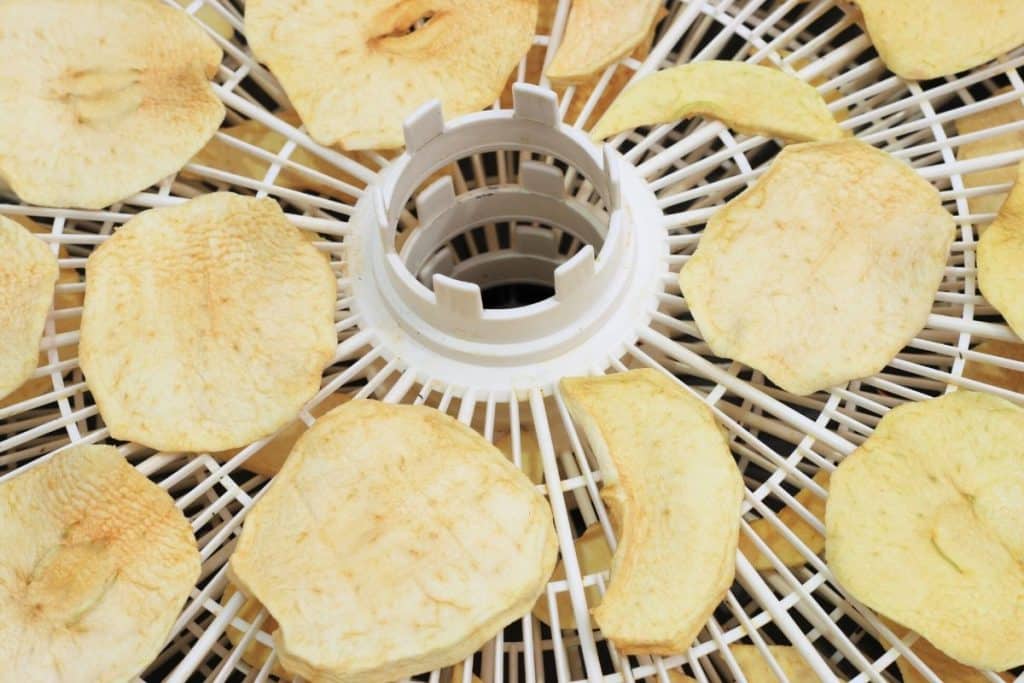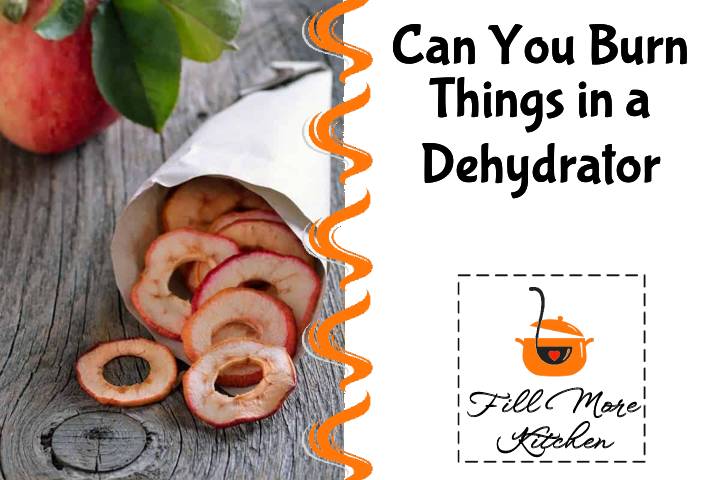If you want to make nutritious snacks, a dehydrator is an ideal appliance for you. Although they are simple to operate, you might wonder whether it’s feasible to scorch food in a dehydrator.
Is it possible to burn food in a dehydrator? To some extent, yes. However, instead of completely burning the item, you are more likely to over-dehydrate it during the dehydration process due to excessive heat, overlapping, or leaving it in the dehydrator for too long.
To ensure the creation of tasty and nutritious snacks, it is crucial to acquire the necessary skills in operating your new kitchen appliance. The following are some indispensable pointers and techniques that will aid in producing delectable and secure snacks.
How to Over Dehydrate Food in Dehydrator
There is always a chance of unintentionally dehydrating food to the extent that it becomes inedible when cooking any kind of food.
Regrettably, if the food surpasses that stage of dehydration, discarding it is the only option. To prevent this, it is crucial to comprehend the root causes of over-dehydration.
Excessive Heat
Using too much heat while dehydrating food is a common mistake made by beginners. To prevent over-dehydration of fruits, meats, or vegetables, it is essential to follow the recommended temperature guidelines.
Excessive Time
One common error people commit when using a dehydrator is subjecting their food to elevated temperatures for extended periods, resulting in excessive dehydration and rendering the food inedible.
To prevent burning food items in a dehydrator, it is essential to carefully read the recipe and determine the appropriate duration for which the item should be placed inside the dehydrator.
Food Position
The placement of your food items is crucial when using a dehydrator to cook.
To ensure equal drying of each item, it is important to load the tray with fruit or vegetable slices in a way that leaves space between each piece, allowing air to circulate.
Signs Your Food is Over Dehydrated
Ensuring that you adhere to the recommended temperature and cooking time is crucial for optimal food dehydration, as previously stated. If you suspect that your food has been excessively dehydrated, there are certain indicators to be mindful of.
Scent
The initial indication of excessively dehydrated food is going to be its aroma! If your food has been over-dried, it will smell like it has been burned. If you notice a burning scent coming from your dehydrator, chances are you have left the food in for too long.
Taste
If the absence of burning doesn’t indicate a problem, it’s advisable to sample your snack before consuming it by removing a piece from the dehydrator and assessing its doneness; if it tastes charred, then it’s probably been over-dehydrated.
Texture and Size
Finally, it is important to consider the texture and size of your food items as they can serve as indicators of over dehydration. If your snacks appear excessively small and break apart easily upon handling, these are clear indications that you have over-dried them.
If you have dehydrated your food excessively, there are some measures that you should consider taking.
Begin by inspecting all the components. Although the majority of the food is probably unsuitable for consumption and must be discarded, there is a possibility that some pieces are still edible. In such a scenario, preserve these pieces and store them appropriately.
It is important to clean the trays of your dehydrator as over-dehydration may cause some food pieces to stick to them, so you should wash them with soap and wipe them clean before putting them back in the appliance.
Tips & Tricks to Dehydrating Food Properly

Although it is possible to burn your food in a dehydrator, you can prevent this by acquiring appropriate cooking skills when using the device. The following are some of the most effective strategies and techniques for avoiding over-drying your food.
Blanche Foods First
Blanching your food items before putting them in the dehydrator is not necessary, but it can produce optimal outcomes. This technique involves destroying the enzymes in food, which helps to extend their shelf life. There are two methods for blanching:
Blanching your food items before putting them in the dehydrator is not necessary, but it can produce optimal results. This technique involves destroying the enzymes in food, which helps to extend their shelf life. There are two methods for blanching:
- Steam Blanching
- Water Blanching
If you blanch your food prior to dehydrating, it can assist in preserving the taste and appearance of the food, facilitate the dehydration process, and extend the shelf life beyond that of fresh produce.
Cut Similar Sizes
One of the common errors individuals commit while using their dehydrator is slicing their fruits and vegetables into various sizes, which can result in uneven drying of the pieces.
To prevent this problem, it is recommended to slice your ingredients into consistent sizes. If that’s not possible, you should monitor the advancement of your food items at various intervals.
By monitoring the food closely, it is possible to identify the portions that are cooked and remove them from the dehydrator before the rest.
Dry Similar Foods
Upon acquiring a dehydrator, the temptation to dry any and all foods may arise, but it is advisable to only dehydrate foods that belong to the same category.
Regrettably, in a dehydrator, distinct flavors and aromas of ingredients tend to blend together, resulting in an unappetizing taste.
To prevent this scenario, it is advisable to cook vegetables with other vegetables and fruits with other fruits. When dealing with strongly scented ingredients, it is recommended to dehydrate them separately. However, foods such as onions and garlic can be dried together.
Place Device in Proper Room
It is important to position your dehydrator in a space that has good air circulation. Many individuals are unaware that the dehydration procedure produces increased levels of humidity, which can result in a potent scent that may be overpowering for some people.
If you plan to dehydrate strongly scented foods such as hot peppers, it may cause eye irritation if the dehydrator is placed in a poorly ventilated room. To prevent this, ensure that there is adequate air circulation around the device.
Store Dehydrated Foods Properly
Finally, it is essential to ensure that your snacks are stored correctly to maintain their quality. After investing a considerable amount of time in preparing them, storing them in a dry container will help prolong their shelf life since the absence of moisture is what makes them last longer.
Improper storage of snacks can lead to moisture getting into the container and causing spoilage. To prevent this, it is recommended to store foods in a sealed plastic container or glass jar. It is important to check the stored food before consuming for safety purposes.
As long as you adhere to the fundamental principles of dehydrating food, burning things in a dehydrator should not be an issue. As previously mentioned, these appliances are simple to use, and you will have no difficulty creating nutritious and tasty treats for yourself and your loved ones!
You can also check this video about “Can You Burn Things in a Dehydrator?”
Check out our top 10 reviews!
Related posts
https://fillmorekitchen.com/can-a-fridge-go-next-to-a-stove-or-cooker/
https://fillmorekitchen.com/can-you-use-pressure-cookers-on-glass-top-stoves/
https://fillmorekitchen.com/how-long-can-taco-bell-meals-be-left-unrefrigerated/
https://fillmorekitchen.com/should-milk-turn-yellow-when-frozen/
https://fillmorekitchen.com/can-you-put-foil-in-a-toaster-oven/



